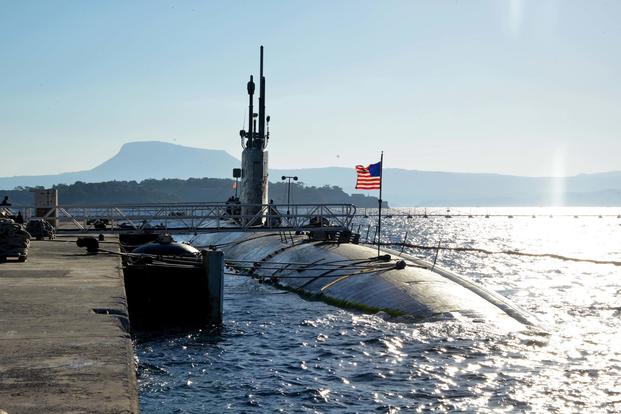Senior U.S. Navy officials this week sought to reassure lawmakers that the service's staggering backlog for ship and submarine maintenance is improving despite having 17 warships out of service this year.
Seeking to dispel what GAO Defense Capabilities And Management Team Director John Pendleton called "a wicked problem for the Navy" at a joint hearing of the Senate Armed Service Committee subcommittees on Seapower and Readiness and Management Support, Secretary of the Navy Richard Spencer and Adm. William Moran, vice chief of naval operations, said ships are going into drydock and getting out of shipyards, but more-utilized vessels, like aircraft carriers, take priority over submarines.
"It is the age old problem of what we talked about the last two years," Moran said.
Pendleton told lawmakers that 2018 was "particularly challenging" for the Navy, with the equivalent of 17 ships and submarines not available because they were waiting to get into or out of maintenance.
"Since 2012, the Navy has lost more than 27,000 days of ship and submarine availability due to delays getting in and out of maintenance," Pendleton said. ""Looking forward, I do see some cause for concern, because the dry docks are short about a third of the capacity that will be needed to conduct the planned maintenance that the Navy already has on the books."
Sen. Mike Rounds, R-South Dakota, was visibly shocked when Navy officials told him that the USS Boise, a Los Angeles-class attack submarine, has been out of service for four years and is still waiting to go into dry dock for maintenance.
"It's not there yet?" Rounds asked in disbelief.
Spencer said that the Boise is scheduled to go in for maintenance in January.
"It's been four years out of service for an attack submarine," Rounds said. "Do we have any other attack submarines that are currently at dock not able to dive awaiting dry dock services?"
Moran said two more attack submarines "are not certified to dive today. Both of those go into dry dock after the new year, one in February and I think the next one May or June."
The Navy testified in late November that it plans to put a high priority on solving its attack submarine shortage by ramping up Virginia-class submarine production to two per year, with the potential for producing more than two per year in the future.
The service also has turned to using private shipyards to perform maintenance on submarines to take the strain off public shipyards.
Despite these steps, Seapower Chairman Sen. Roger Wicker, R-Mississippi, asked "Why did that happen?" following up on the revelation of the Boise’s delay.
Moran explained that attack submarines have to wait behind warships that have "been ridden very hard" and have a higher priority for maintenance than submarines.
"We have begun to put them into private yards ... and get submarines that need to be in dry dock into dry dock sooner."
Rounds was not satisfied.
"It appears to me that even with the resources we have allocated so far, we are going in the wrong direction, it would appear, with regard to the fleet that we've got," Rounds said. "If it's a matter of resources, and if you are not here in a public testimony to tell us what the impacts are of not having the additional resources that are necessary to keep these critical pieces in the defense of our country operational, how in the world can we ever go to what we know we need in a 355 ship Navy and support them?"
Spencer answered by saying "I couldn't agree with you more senator, but as a fine example, so everyone truly does understand the ups and downs of this, the monies that you gave us to optimize the shipyards -- that's a two-year project at the least to get that up and running to the new flow rate."
Spencer than offered a recent study of one of the shipyards to further illustrate the problem.
"They tracked one of the maintenance people for his hands-on time; he drove a golf cart around the area for four miles one day in search of parts," Spencer said. "We have to bring the parts down to the ship. This is what I am talking about -- the science of industrial flow that needs to be put into these old ship yards. We are doing it. The monies that you have given us will get after that; it's two years to affect that, but to kill it now ... would be a crime."
Moran added that the Navy has just "got back the shipyard workers in the public yards to the level we wanted after sequestration five years ago."
"This is a unique, highly-skilled workforce in our nuclear yards, and if they don't feel like they are supported, if we are not given them the adequate resources to do their job and have the manning levels where they need to be -- they walk," Moran said.
"They can go other places because they are highly skilled, and it takes a long time to recover that."
-- Matthew Cox can be reached at matthew.cox@military.com.










